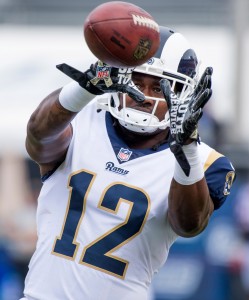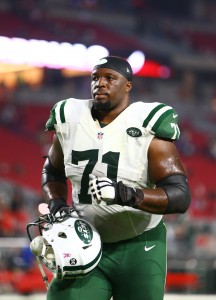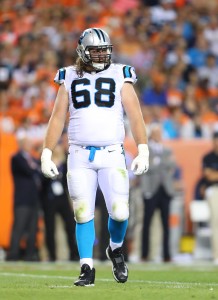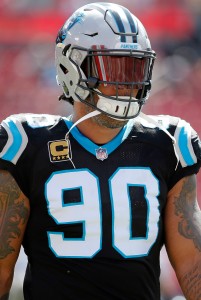The Rams pulled off a blockbuster move leading up to the 2017 season, trading defensive back E.J. Gaines and a second-round pick in 2018 to the Bills in exchange for former first-round receiver Sammy Watkins and a sixth-round selection in 2018. 
The move was a mixed bag for Los Angeles. On the one hand, Watkins led the team with eight receiving touchdowns, averaged 15.2 yards per reception and helped the Rams post the No. 1 scoring offense in the league. On the other hand, however, the fourth-year wideout made only 39 receptions on the season and ranked fourth on the team with 593 yards. The thought is that the receiver will benefit of a full offseason with the high-powered offense.
“I just think he got on a roll with the guys that [Jared Goff] had during OTAs, and once a guy is used to throwing it to someone else, he throws to his guys,” Watkins said. “It’s just part of the game where you need more time, or maybe another year.”
It shouldn’t come as a surprise that Watkins would like the remain with the Rams and that they would like to have him back. His proficiency on vertical routes opens up the middle of the field for chain movers like Robert Woods and Cooper Kupp, and frees up space in the flats for Todd Gurley. What could hold the team back from tagging the explosive wideout is twofold. First, the cost to franchise tag a receiver is projected to be $16.2 MM, according to overthecap.com. That’s a hefty price to pay for a receiver who has missed 12 games in the last three seasons and didn’t show much in 2018. The second reason is that the Rams are also debating placing the franchise tag on safety Lamarcus Joyner. That would only cost Los Angeles a projected $11 MM.
In 2018, Pro Football Focus rated Watkins the No. 33 receiver in the NFL with a grade of 76.2, tying him with Ted Ginn. The site also published a piece on the receiver, detailing how his touchdown rate — 11.43 — is almost impossible to replicate. From the in-depth article:
So, from 2007 to 2016, 60 players had a 10-percent touchdown rate on 50-plus targets. Of those 60, two (2012-13 Danario Alexander and 2013-14 Marvin Jones) did not play at all the next season. So 58, then. Those 58 players averaged 10.8 touchdowns on 87.12 targets (12.7 percent). A year later, that same group averaged 5.5 touchdowns on 83.8 targets (6.8 percent). Essentially, guys who score touchdowns at a 10-percent rate one year see that rate cut in half the next.
There is no doubting the talent Watkins possesses. If he can recapture and build on his success from his Buffalo days, there is no doubt the Clemson product has the potential to be an 80-catch, 1,200-yard, 10-touchdown receiver in one of the most explosive offenses in the NFL.
As detailed earlier on Pro Football Rumors, receiver is not one of the Rams’ most pressing needs entering the 2018 offseason. With Woods, Cupp and the emerging Josh Reynolds, Los Angeles appears set with plenty of talent at the position. With a projected $51 MM in cap space, however, the team could afford to bring back Watkins for another year to see if Watkins can live up to his projected playmaker status coming out of college.
The choice is a boom-or-bust one for the Rams. Do they think he is likely to emerge as a No. 1 pass catcher in a potent attack with a full season working with Goff in the books? Or do they think that 2018 is the beginning of a trend rather than an outlier?


